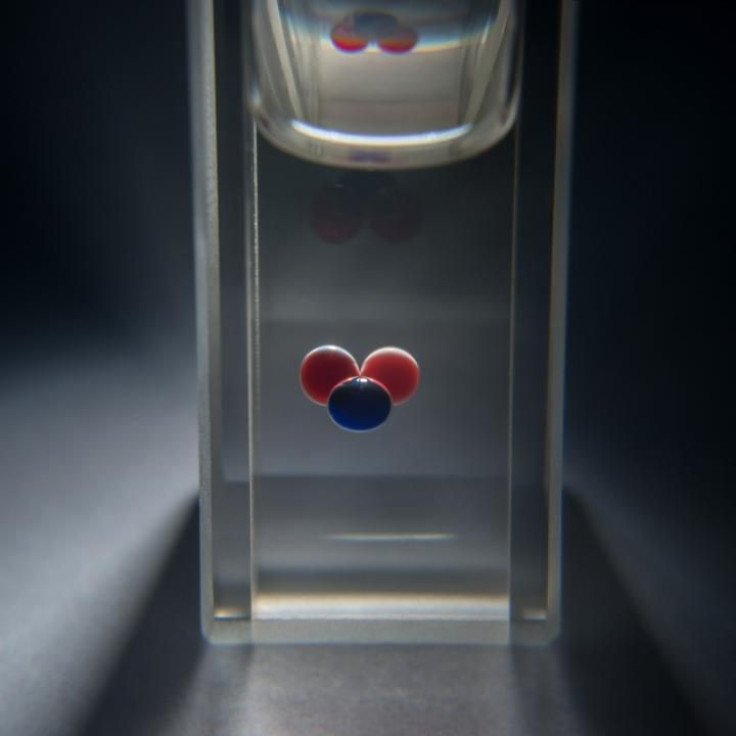Scientists Demonstrate Chemical Bits Are Stable Enough To Store Information

Researchers from the Institute of Physical Chemistry at the Polish Academy of Sciences in Warsaw have demonstrated it is possible to use chemical reactions to store information. The findings of their experiments, described in a study published in the latest edition of the journal Physical Chemistry Chemical Physics, could one day be used to construct a fully-functioning "chemical computer."
The researchers were able to create a chemical bit using three adjoining droplets, between which chemical reaction fronts propagated steadily and cyclically. Their experiments, which used a thin layer of lipid solution in oil — to which small quantities of solution had been added — showed that a Belousov-Zhabotinsky (BZ) reaction, a kind of oscillating chemical reaction, can be used as a chemical foundation of memory.
Read: Scientists Design Energy-Efficient Biological Supercomputer
"Our idea for the chemical storage of information was simple. From our previous experiments, we knew that when Belousov-Zhabotinsky droplets are in contact, chemical fronts can propagate from droplet to droplet. So we decided to look for the smallest droplet systems in which excitations could take place in several ways, with at least two being stable. We could then assign one sequence of excitations a logic value of 0, the other 1, and in order to switch between them and force a particular change of memory state, we could use light," study co-author Jerzy Gorecki said in a statement.
For the purpose of their study, the researchers took three adjoining droplets arranged in a triangle. This allowed them to overcome a hurdle that systems with pairs of coupled droplets could not surmount.
"In paired droplet systems, most often, one droplet excited the other. Unfortunately, only one mode of this type was always stable, and we needed two," co-author Konrad Gizynski explained in the statement. "Both droplets are made up of the same solution, but they never have exactly the same dimensions. As a result, in each droplet, the chemical oscillations occur at a slightly different pace. In such cases, the droplet oscillating more slowly begins to adjust its rhythm to its faster 'friend.' Even if it were possible with light to force the slower oscillating droplet to excite the faster oscillating droplet, the system would return to the mode in which the faster droplet stimulated the slower one."
The experiments revealed that both rotational modes in the system — the one in which the chemical fronts passed from droplet to droplet in a 1-2-3 sequence, and the other in which it did so in the opposite direction (3-2-1) — were stable, and if the system enters one of them, it remains so until the Belousov-Zhabotinsky reaction is complete.
Of course, this does not mean scientists are any closer to building a viable and efficient chemical computer, as the system is still not capable of recording and reading the stored information. However, the experiments do prove that chemical bits are stable enough to store information.
"In fact, our chemical bit has a slightly greater potential than the classical bit. The rotational modes we used to record states zero and one had the shortest oscillation periods of 18.7 and 19.5 seconds, respectively. So if the system oscillated any slower, we could talk about an additional third logic state," Gizynski said.
© Copyright IBTimes 2024. All rights reserved.












